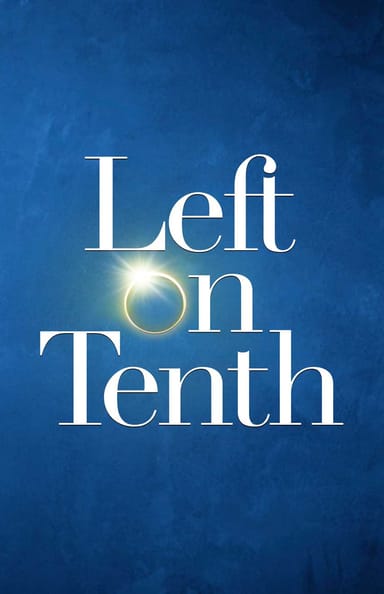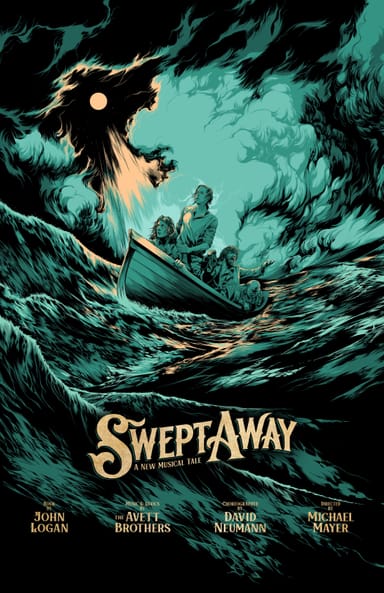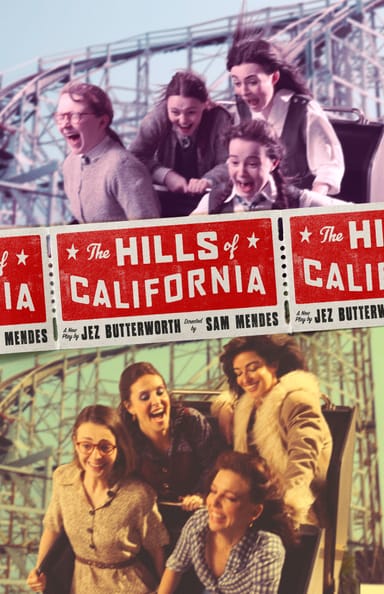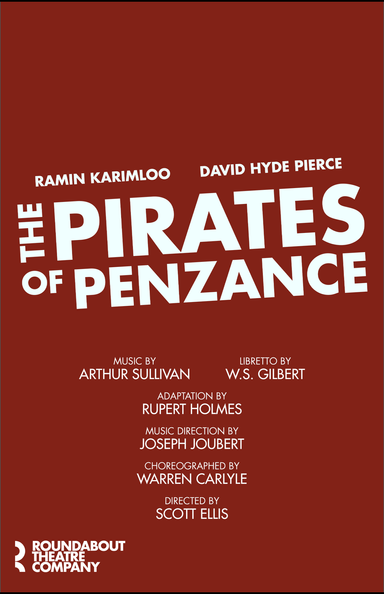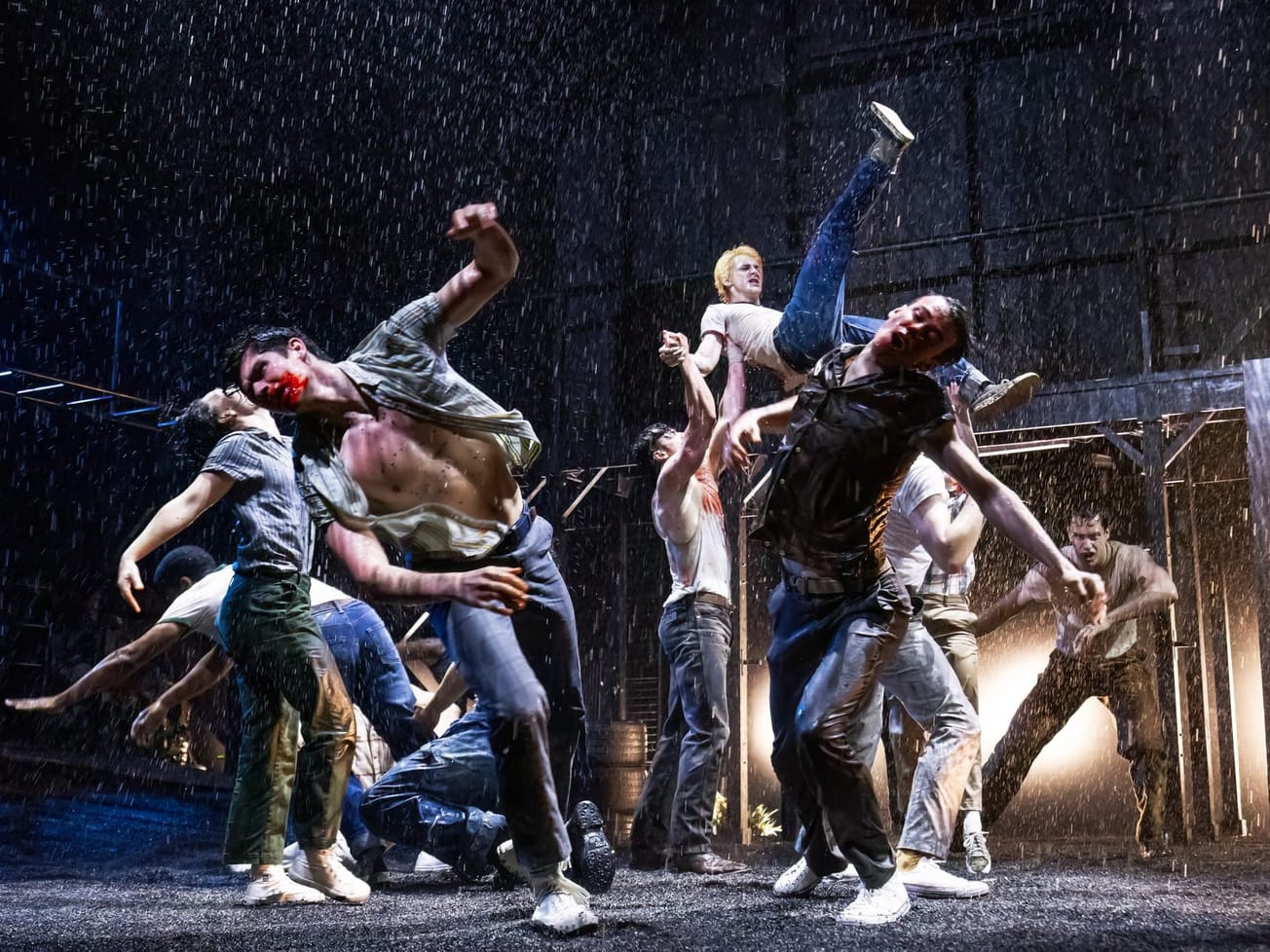In the midst of the pandemic, director-writer Tina Landau reached out to producer Eva Price with an idea for a show. As Price recalled, “[Tina] was like, ‘I’m pretty sure this show is unproducible, so I’m calling you.’”
Fifteen years prior, now-Tony Award-nominated Landau and Tony-winning actor Idina Menzel discussed a story set in a redwood forest. Menzel had learned about environmental activist Julia Butterfly Hill, who famously lived in a redwood for 738 days. It made Menzel wonder: “What does that take in someone, and could I escape my life and throw everything away and do something like that?” The questions sparked Menzel and Landau’s exploration into a story about survival, nature, introspection and healing.
But life took the two artists in different directions, and they put the idea on pause — until the pandemic granted them unexpected time. They each spent more time in nature, reconnected, and pulled the redwood idea out of the drawer. “We knew we wanted to stay with the singular image of a woman in a tree,” Landau said. “We were asking [ourselves]: What would cause someone to do that? And what would you find there, and why would you go there? What would you be running away from or towards?” And then Landau experienced a death in her family.
The breaking open that comes with a loss — and the need for healing from it — became the impetus for the musical’s main character, Jesse (played by Menzel), to retreat and venture into the redwoods of Northern California. Their story begins as Jesse experiences a monumental tragedy and leaves her wife to drive across the country and seek out nature. They recruited composer-lyricist Kate Diaz whose music has a “pop, alt rock, alt folk” sound, Laundau described, and “knows how to write cinematically.”
Landau and Menzel weren’t sure if their show should take shape as an art installation, a concert or an outdoor theatrical experience. “They just knew that whatever form it took, the immersiveness of the production was integral to what the show was going to be,” Price said. Price pushed for it to be a musical inside a traditional theater setting because, as she said, “To me, the most interesting things to produce inside a theater are the things that no one expects can exist inside that theater.” The project would be a traditional musical — at least in the sense that it would take place in an indoor theater — and would be titled “Redwood.”
Part of the challenge is that the musical “needs flying, it needs projections, it needs climbing, it needs to feel like we’re inside the redwoods. This is key,” Price said. “This is as important as the book and the music.” The trio needed to find a venue willing to develop a show with these extreme technological and physical requirements.
San Diego’s La Jolla Playhouse said yes.
Choreographing the climb
The La Jolla Playhouse team was also crucial in “Redwood”’s development.
“I was looking for aerial choreography and knew I didn’t want traditional Flying by Foy,” Landau said, referencing the aerial choreography troupe responsible for Broadway shows like “Chitty Chitty Bang Bang” and “Peter Pan.” “It wasn’t about taking people through space.” No, “Redwood” is about climbing and aerial work that would evoke the spirit of traversing the forest.
La Jolla Playhouse executive producer Eric Keen-Louie suggested the aerial dance company bandaloop. Established in 1991 by Amelia Rudolph, bandaloop innovates in and performs vertical dance. A combination of choreography and climbing, bandaloop has performed across six continents in theaters but also on buildings, skyscrapers, cliffs, trees and more. In 2020, Melecio Estrella succeeded Rudolph as the company’s artistic director. Given the ensemble’s unique combination of skill and performance surfaces, Landau recruited Estrella via bandaloop to choreograph “Redwood.”
“The core of the story — around the wisdom and the healing power of nature — couldn’t be more perfect for us because that’s really what we’re all about,” said Estrella of bandaloop. “We’re also about wild land/urban meshing and [bringing] people and social experiences into nature. That’s part of the magic of this show.”
The movement Estrella staged for “Redwood” fluctuates between realistic climbing and metaphorical aerial dance. For the natural sequences, “Tina was very clear that we want to use the climbing systems that arborists would use,” Estrella said. Bandaloop’s lead rigger, Basil Tsimoyianis (who previously assisted U.C. Berkeley tree scientists scale sequoias) designed the system for “Redwood.”

Next, Estrella needed to acclimate the actors to it. A “culture of safety” is Estrella’s top priority before actors engaged in strength training (building the muscles they’ll use eight shows a week), gear training (familiarizing with the equipment), mobility training (understanding the mechanics and feelings of swinging on the ropes) and awareness training (learning to use all five senses to orient in space). Menzel, Landau and Diaz even took a real redwood walk to experience in real life what they’d want to translate to the stage.
As Estrella noted, “When you’re dancing on a redwood tree, there’s really nothing like it — in terms of the smell, the texture, that this [tree] is actually a living being that you’re interacting and dancing with.”
Once out of nature and in the theater, Estrella built movement inspired by the actors’ personalities, natural movement signatures, character arcs and the physical design of “Redwood.”
Designing the redwoods
The main relationship at the heart of “Redwood” is between Jesse and a tree named Stella. So getting Stella right was a top priority. While the musical follows Jesse’s immersion into the redwood forest, the creative team decided there would be only one actual tree onstage.
“When we were working on the design, it was the million-dollar question: How are we going to do the tree?” Landau remembered. Scenic designer Jason Ardizzone-West added, “Our challenge was to create a very realistic-looking piece of a redwood tree that was cinematically accurate, but existing in the context of a very abstract space.”
Still, the team wanted to inspire awe in the moments when Jesse explores the forest and ascends Stella. The physicality of the rigging and the tree combine with media designer Hana S. Kim’s video design to place audiences in Jesse’s point of view. As she scales Stella’s trunk, the video reflects greenery and height. But Landau and Kim were careful that the video didn’t look like a nature documentary nor like the landscapes of Disney’s theme park ride Soarin’Around the World. “The primary goal for the media in the piece was to tunnel to [Jesse’s] mind,” said Kim. “Redwood” is something new.
“The goal was never to reproduce the Redwood Forest onstage,” Ardizzone-West explained, “but rather to let the audience understand Jesse’s perspective — what her experience of the Redwood Forest was or her experience of grieving and memory. So the spatial, lighting and media design were all working together to try to achieve that goal of bringing the audience into her head.”
“That idea of a broken vessel — the broken emotional state of Jesse — informed the physical design of the space,” said Ardizzone-West. The surfaces of the set are jagged and shard-like and extend into the audience space. In turn, the media projections appear in the playing space (on a back wall, on the floor) and bathe the audience, as well.
The merger of all these disciplines creates a physical production unlike any these artists have seen.
Testing it out
“We’re doing something cutting edge,” said Menzel. “We weren’t sure if it would work — to do the multimedia of this and make a very human story, told in this global majestic setting, and strike that balance.”

On Feb. 13, the new musical “Redwood” began its world-premiere run. Directed by Landau, “Redwood” features a book by Landau, additional contributions by Menzel, music by theater newcomer Diaz and lyrics by Diaz and Landau. (Landau and Menzel are also credited as co-conceivers.) Given the California audience response, Menzel said, “We weren’t sure it would work — now we know for sure.”
The next frontier is making it work on Broadway. “Redwood” will begin performances on Jan. 25, 2025, at the Nederlander Theatre. Price isn’t worried; she’s used to customizing one musical for multiple spaces. (Her Tony-winning revival of “Oklahoma!” was redesigned five times to accommodate five different venues — and that was before a national tour.)
The producer’s unique challenge with “Redwood” will be communicating the immersive experience — which doesn’t optimally translate to photo and video — to potential ticket buyers. “‘Redwood’ cannot be captured through any video or photo — that’s what we learned [in La Jolla],” Price said. “People were like, ‘I read about it,’ or ‘I saw that photo,’ and then they came in like, ‘What the hell? That was not even remotely what I was expecting.’”
That response has bolstered Landau’s and Menzel’s confidence and hope. “It’s very emotional to know you’ve been working with someone, who I now love very much, and to be putting on a play together and people actually bought tickets, showed up, left [feeling] like they’d been changed a little,” Menzel marveled. “It’s really exciting.”



















